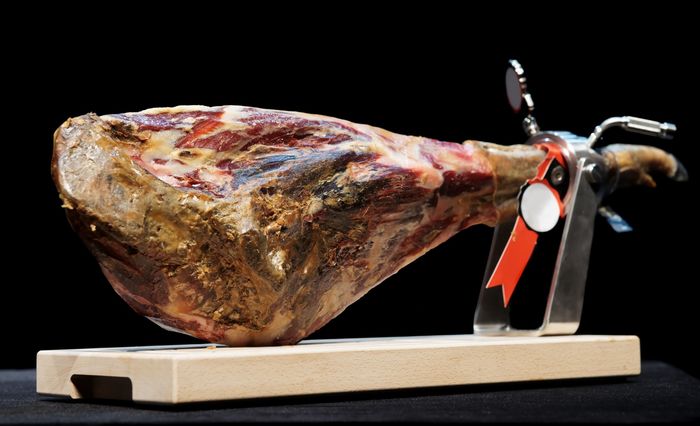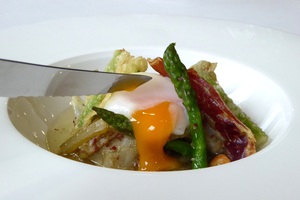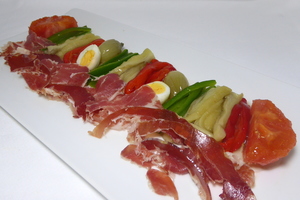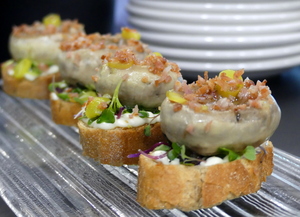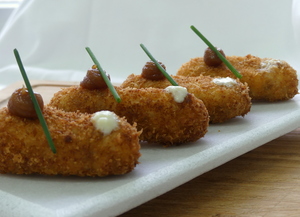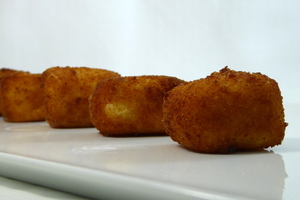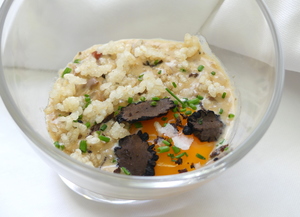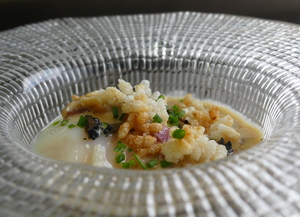Iberico ham
Back legs of the Iberian pig, salted, dried and cured to acquire the special characteristics and nutritional properties suitable for human consumption.
Iberian ham comes from pigs of the Iberian breed. The main features that make their quality stand out come from the purity of the pig breed, the way in which they are raised in free range pastures with trees as well as their diet and the ham curing, which takes from 8 to 36 months. Iberian ham is distinguished from the rest by its particular texture, aroma and taste although the taste varies depending on the acorns the pig has been eating and the exercise done.
The classification is made depending on the amount of consumed acorns before the slaughter. The official Spanish classification is “Cebo” Iberian ham, “Cebo Campo” Iberian ham, “Recebo” Iberian ham and “Bellota” (acorn-fed) Iberian ham.
-
Type of dish
- Beers
- Cocktails
- Breakfasts and brunch
- Burguers
- Juices, milkshakes and beverages
- Shellfish
- Bread and pastries
- Pizzas, patty
- Dessert
- Pasta
- Sándwich
- Pastries
- Finger foods
- Ice creams and sorbets
- Legumes
- Salads
- Eggs
- Patty
- liqueur
- Harvard plate
- Main course
- Meats
- Fish
- Birds
- Vegetables
- Soups and creams
- Rices
- Coffee, chocolate and infusion
- Cheeses
- Appetizers and canapes
- Temperature
- Cuisine type
- Additional culinary preparation
- Conservation technique
- Seasonal recipes
-
- Aromatic herbs
- Beverages
- Big game hunt
- Bread and pastries
- Canned goods and pickles
- Cereals
- Condiments, spices and additives
- Cooked, salted, preserved and cold meats
- Dried fruits and nuts
- Dry pulses
- Edible oils and vinegars
- Eggs and derivatives
- Feathered game hunt
- Fish cuts
- Fishes
- Insects
- Kitchen and bakery tecniques
- Kitchen and bakery utensils
- Meat cuts
- Meats
- Milk, cream and derivatives
- Mushrooms
- Offal
- Pasta, rice, flour and derivatives
- Poultry
- Seafood
- Service techniques
- Service utensils
- Vegetables cuts
- Vegetables, fruits, tubers and seaweed

